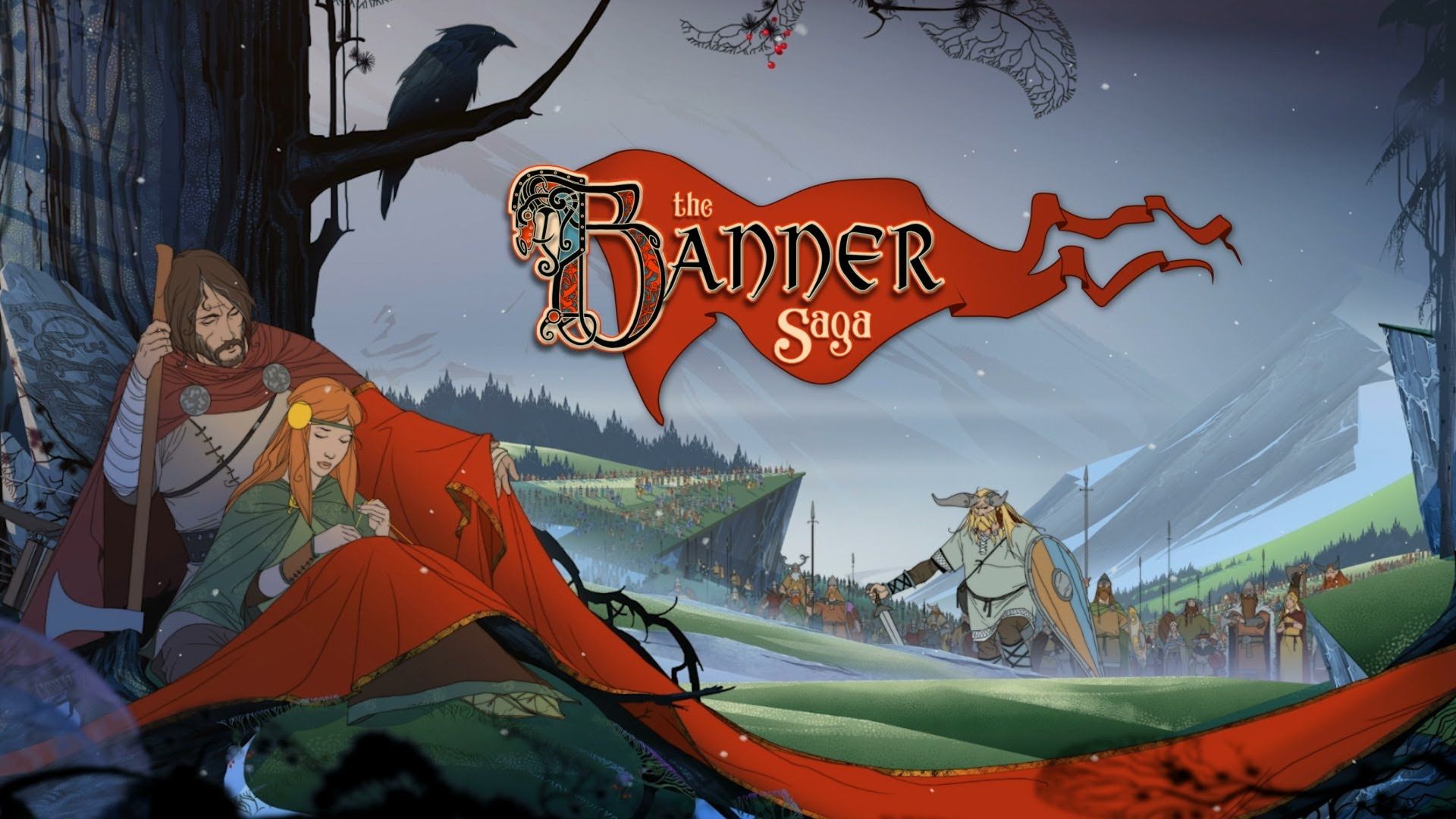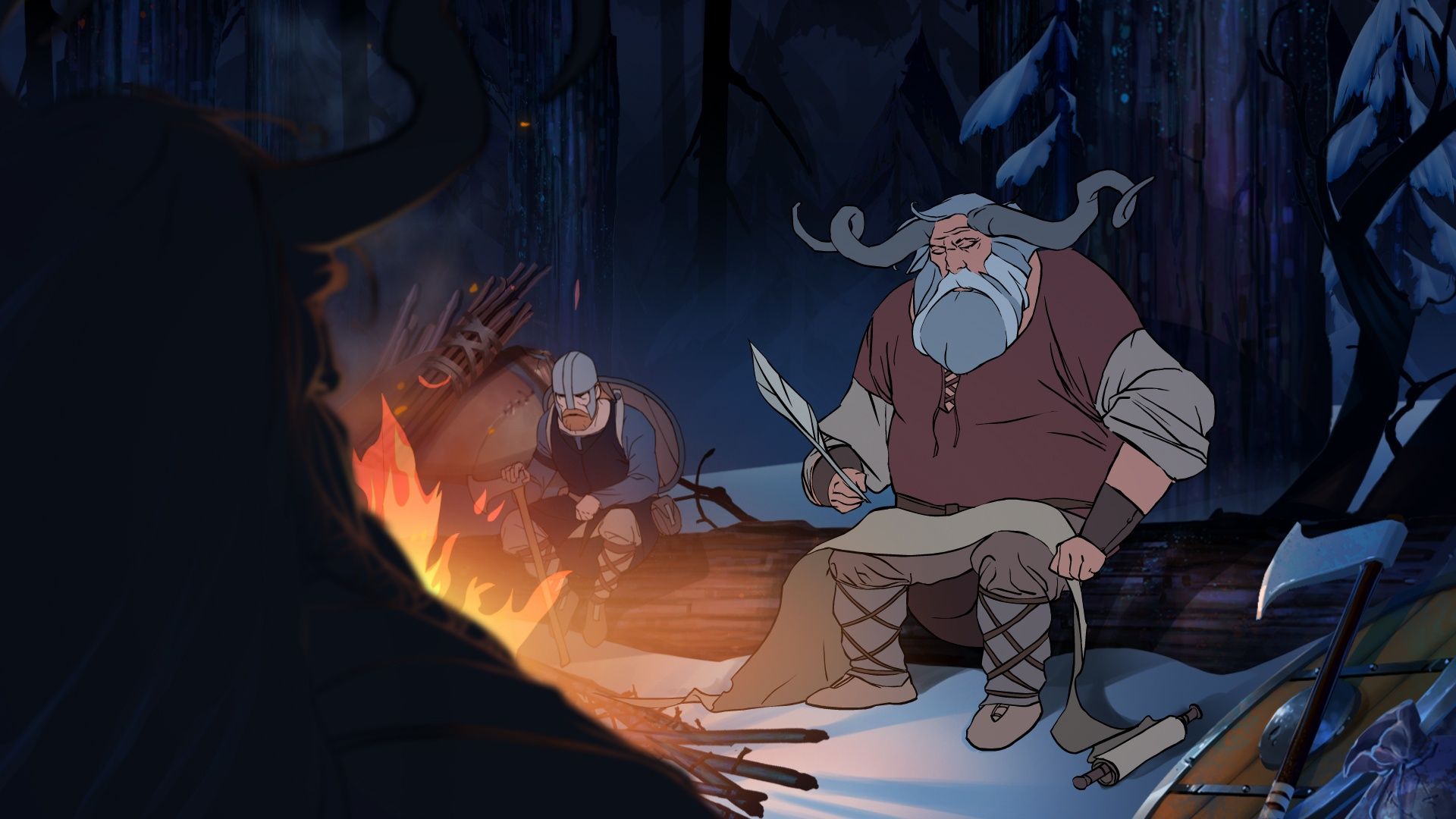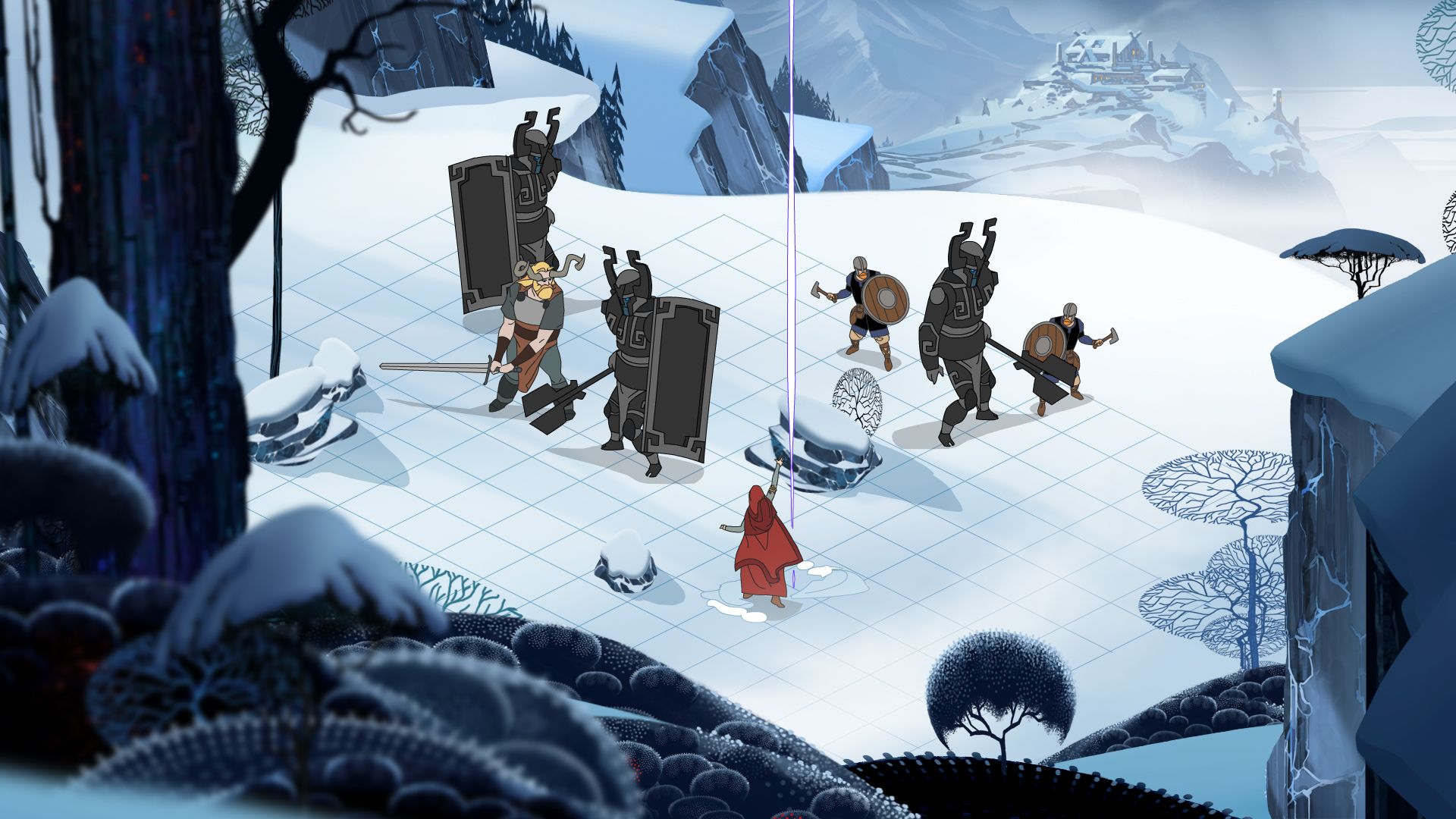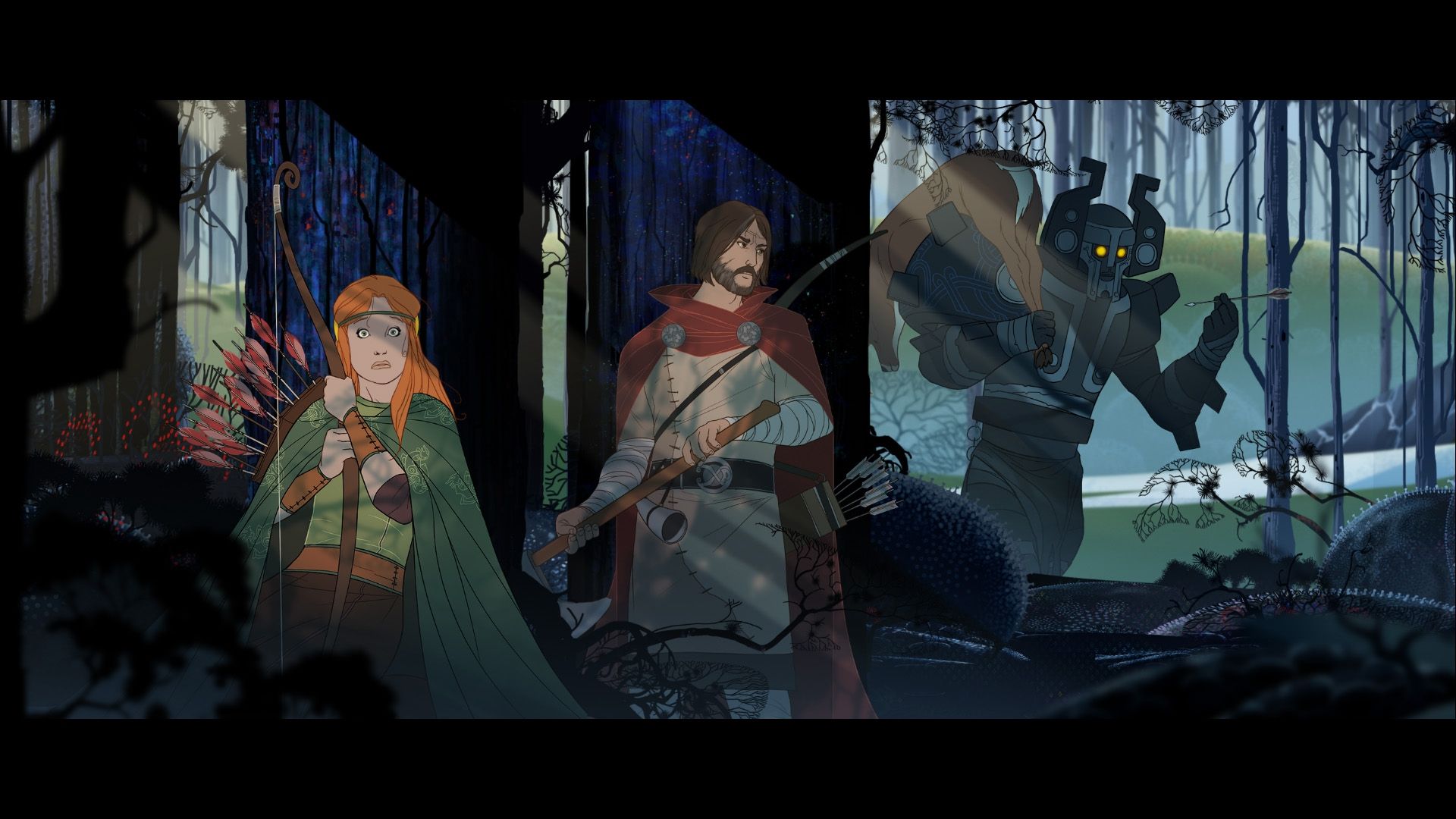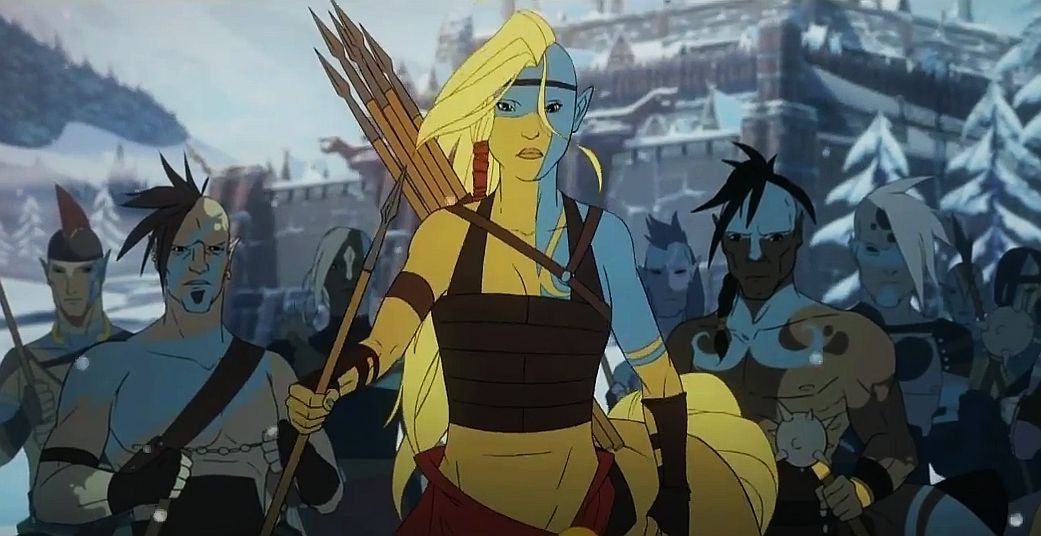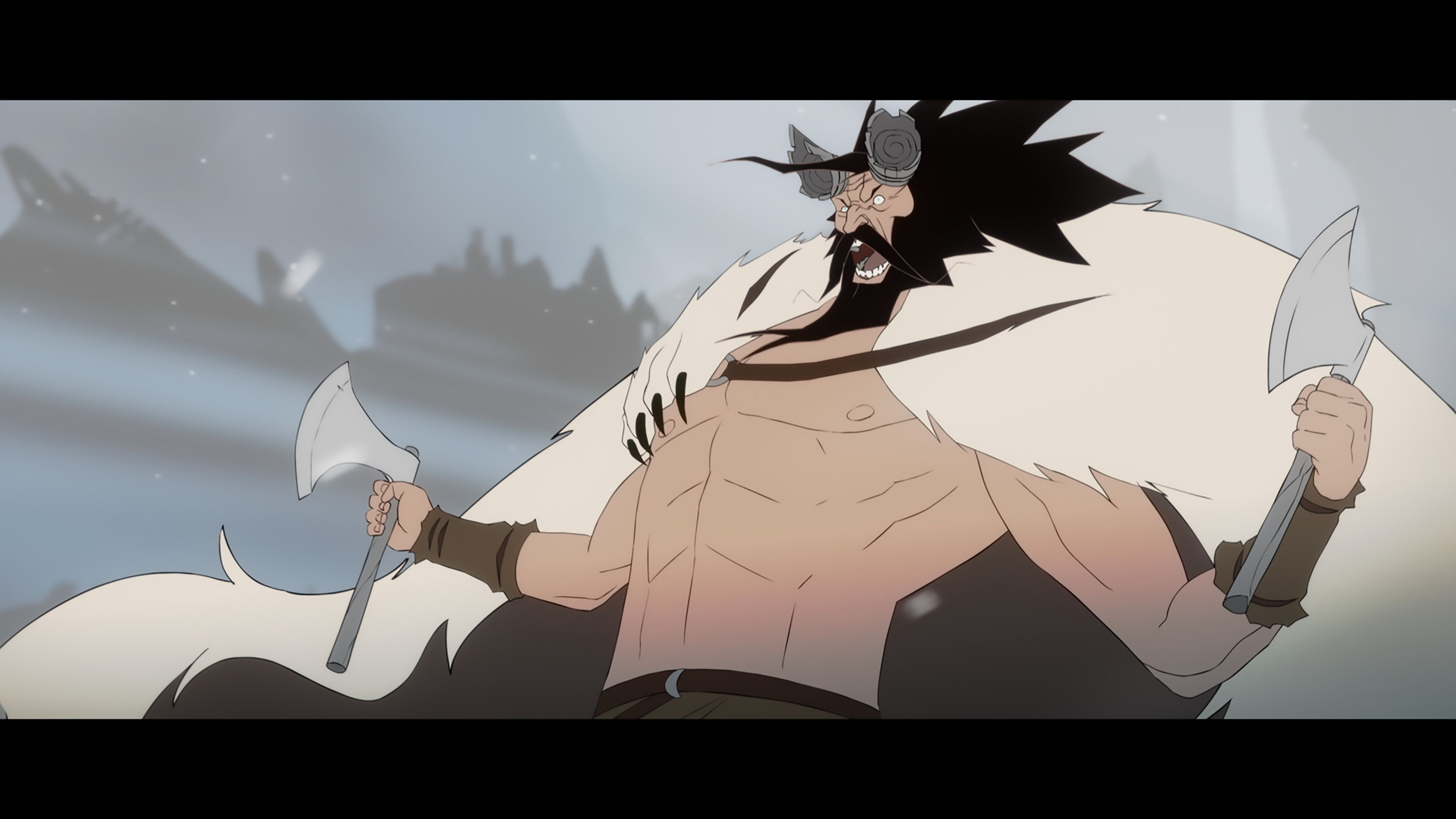While the Nintendo Switch in the past year has allowed me the chance to finally delve into an extensive back catalog of indie games that I've yet to play while on the go, Stoic Studio's The Banner Saga games have been among the indies titles I've (sorely) been missing out on in the past few years. From their strategy-RPG gameplay to a rich and beautiful, hand-drawn aesthetic, The Banner Saga games are, for lack of a better expression, "my jam."
Thankfully, the Switch release of both the first game and its sequel, The Banner Saga 2, finally gave me the opportunity to experience the series and see what I was missing out on. Having now finished both titles on the Switch, all I can say is that if you have yet to experience Stoic's excellent strategy-RPGs, now might just be the perfect time to catch up before the series' final installment, The Banner Saga 3, arrives later this summer.
[pullquote]"If you have yet to experience Stoic's excellent strategy-RPGs, now might just be the perfect time to catch up before the series' final installment."[/pullquote]
For those that may have missed out on the series so far, The Banner Saga series is the work of developer Stoic Studio, a team initially founded by a trio of former BioWare developers. First released in 2014 through a successful crowdfunding campaign, The Banner Saga is a strategy-RPG series that takes players through a war-torn and chilling world inspired by Norse mythology, in which players are put into the middle of the conflict between humans, the giant-like Varl, and the menacing stone creatures known as the Dredge.
The core gameplay of The Banner Saga switches between traveling with your caravan of humans and Varl across the game's beautiful yet melancholic world, encountering random events, and taking on battles against hostile enemies, all while having to manage your caravan's supplies and morale.
In a way, The Banner Saga feels closest to a mix of games like Final Fantasy Tactics or XCOM in its strategy-RPG gameplay but is intertwined with a decision-making system that will bring to mind titles like Mass Effect, with a dash of Oregon Trail.
[pullquote]"The Banner Saga feels closest to games like Final Fantasy Tactics or XCOM...with a dash of Oregon Trail."[/pullquote]
In both of these instances, The Banner Saga admirably melds two genres together to create a compelling narrative that's defined by having to make hard decisions and having to make them often. Aside from the game's fun yet challenging strategy-RPG gameplay, the Oregon Trail-style travel system is a smart and effective way to string together the various battles that players will have to endure, while adding opportunities to interact with your party members and having to weigh different ethical (and moral) options.
Likewise, numerous random events will pop up that require the player to take command and make tough decisions for the benefit of their party, such as deciding whether to intervene in a roadside robbery (which might lead to a battle), or how to break up fighting and petty squabbles within your caravan, and dealing with the repercussions afterward.
For those that might have played strategy-RPGs like the previously-mentioned Final Fantasy Tactics or XCOM titles, The Banner Saga will be reasonably self-explanatory in its gameplay. Aside from the traditional grid-based system that players move their characters around on and engage in combat, The Banner Saga adds a few intriguing wrinkles to its gameplay that allow players a more considerable degree of strategy and tactics at their disposal.
[pullquote]"Numerous random events will pop up that requires the player to take command and make tough decisions for the benefit of their party."[/pullquote]
One of the biggest differences in its combat mechanics comes through the way that The Banner Saga implements the health and strength of your party members. On the battlefield, each character has an "Armor" stat and a combined "Health/Strength" stat and, when attacking another character, players have the option to damage either their opponent's Armor or Health/Strength.
Rather than having a traditional hit point bar like in other strategy RPGs, The Banner Saga's method implements a bit more strategy, as damaging an opponent's Armor -- while not directly damaging the enemy's Health -- sets them up to be weakened by one of your next party members in line before they are eliminated. Likewise, the more that an enemy's Health/Strength is diminished, the less effective that they will be during combat, which makes each turn count when it comes to figuring out where to position your characters, and noting the turn order that they take actions in.
The Banner Saga also mostly does away with randomized dice rolls or other similar elements in favor of giving players a pool of "Willpower" points. Each of the players' characters has an assorted number of Willpower points that they can apply to a variety of actions -- movement, attacks, abilities, etc. -- to give that extra edge for your character during your turn.
Willpower will very much have a core impact in how you plan out your strategies, but I loved how it adds just a bit more of a meaningful bit of input than having to rely on random dice rolls/RNG to play into your favor during attacks and strategies.
[pullquote]"The Banner Saga 2 doubles down on the game's excellent core strategy-RPG systems by incorporating more variety."[/pullquote]
From top to bottom, through gameplay and storytelling, The Banner Saga does an excellent job of wrapping its challenging (though not punishing or unwelcoming) combat and gameplay inside of a tale that's filled with a dynamic and compelling cast of characters. The first game in the series has a few rough edges in terms of design and combat -- as the battles often lacked a ton of variety -- but in the time since its release, my experiences in playing its sequel, The Banner Saga 2, show that Stoic clearly took to heart how it might expand on the first game's potential.
Where The Banner Saga was about introducing players to the core gameplay loops and delivering a fun (if sometimes flawed) combat system, The Banner Saga 2 fleshes out those systems to a more significant degree. While the first game mainly relied on the dynamics of melee and ranged combat between humans, Varl, and the Dredge, The Banner Saga 2 doubles down on the game's great core strategy-RPG systems by incorporating more variety and elements of surprise.
This includes the introduction of plenty of new character types to utilize in battle, new abilities (including a heavier emphasis on magic abilities for attack and defense purposes), and even new races with unique dynamics in battle, such as the centaur-like Horseborn that employ a higher degree of mobility to their combat strategies.
[pullquote]"The series contains an epic and thrilling setting inside of an intimate sense of storytelling."[/pullquote]
As the Switch releases for these titles are straight up ports with nothing else in the way of "new" content (for those that might have played them on PC or consoles previously), the central question when it comes to The Banner Saga is knowing how the games actually play, especially when condensed down to a smaller screen. Thankfully, I'm happy to say that the games play quite well on the Nintendo Switch, and while they have a few small issues in being translated to Switch, those issues are minor in comparison to how well-suited the series is in a portable setting.
Given that the game revolves so heavily around strategy-RPG mechanics -- i.e., moving characters around on the battlefield -- I was worried about the potential for the games to be a mismatch for the Switch's smaller screen, and especially given that I tend to play most games on the Switch in handheld mode. By and large, The Banner Saga avoids most of the pitfalls that have undone some other ports of a similar nature to the system -- such as small text-size or hard to see UI elements -- and admirably translates the game's strategy-RPG gameplay to the system, even when playing it in handheld mode.
It's not perfect by any means, as there are a few instances where The Banner Saga's UI gets a little cumbersome to navigate, especially on playing fields where a lot is going on. However, both of The Banner Saga games on Switch feel so well-suited to the system, especially in their pick-up-and-play nature and being able to carry around my caravan's story wherever I go.
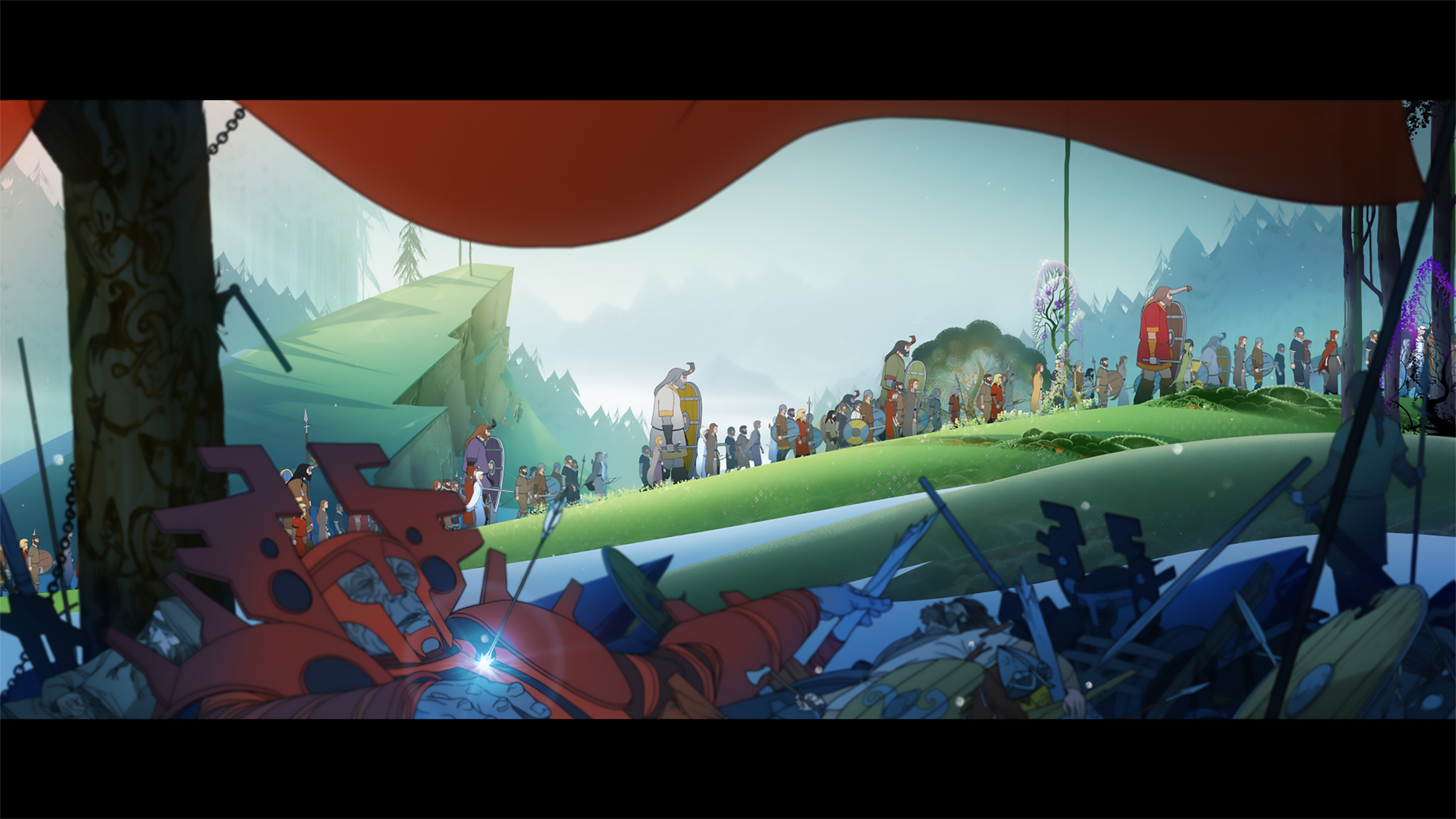 [pullquote]"Having the series on the Switch felt (to me) like the perfect way to experience Stoic's epic story."[/pullquote]
[pullquote]"Having the series on the Switch felt (to me) like the perfect way to experience Stoic's epic story."[/pullquote]
Though The Banner Saga games have been available for some time now on other platforms (and even in a portable fashion on mobile), having the series on the Switch felt (to me) like the perfect way to experience Stoic's epic story. Given the timing of their release, with The Banner Saga 3 just over a month and a half away, the Switch release for both The Banner Saga and The Banner Saga 2 feels fitting to how the series contains an epic and thrilling setting inside of an intimate sense of storytelling. If you have yet to play either of the series' installments yet, they are very much tales worth taking with you on your travels.
The Banner Saga first released in 2014, and while you can play it on the Nintendo Switch now, you can also pick it up on PS4, Xbox One, PC, Mac, Linux, iOS, and Android. The second game, The Banner Saga 2, is available today on the Switch and also available on PS4, Xbox One, PC, Mac, iOS, and Android, which will be followed by the series' third and final chapter, The Banner Saga 3, on July 24th, 2018.

